Frequent readers of this blog know that I’m obsessed with Open Badge eCredentials. I think they provide a fantastic lens to analyze and improve the quality of lifelong, lifewide learning: for delivery, for recognition or “valorization” and for use as a skills currency.
But I now have a new lens: Extended Enterprise Learning (also called Extended Enterprise Training or EET). I think it’s a great way to engage pragmatic private sector companies about the benefits of Open Badge eCredentials. IBM is just one example of early adopting companies who are beginning to see the benefits.
For me, Extended Enterprise Learning is a threshold concept: it opens up new vistas and reframes previous insights. I’m currently refactoring my thinking with this concept explicitly in mind.
It comes with a twist, focusing not on employee development, but on partner development in the value chain, with the goal of measurably improving customer satisfaction and sales growth. It’s mostly about supporting products: improving quality and system efficiency, growing sales and developing informed users who will fuel future demand and development. For-profit companies tend to care about these metrics a lot, so it’s easier to get their attention with solutions that help them with their measurables.
And credentials already play a big part in this kind of learning. We’re just talking about making them digital and portable.
We need to do a better job of getting into the private sector with Open Badge eCredentials and I suggest that we start where these bottom-liners care the most and move on from there.
What is the Extended Enterprise?
Wikipedia calls the Extended Enterprise “a loosely coupled, self-organizing network of firms that combine their economic output to provide products and services offerings to the market.” Wikipedia describes it as a multi-stakeholder view of Michael Porter’s value chain. Or maybe an ecosystem of ecosystems? Whatever, it’s an increasing reality as organizations in different sectors realize that they can’t do it all by themselves and that there’s power in organizational clusters.
The IT sector has latched on to the concept, using it as a framework loosely coupled, agile enterprise architectures – modular, pluggable systems.This short presentation from 2009 does a great job of laying out the concept and its implications:
In his analysis above, Graves lists the”three distinct economies of the enterprise”, which got my attention in this era of social media and Serge Ravets’s notions of badges as networks of trust:
- transaction economy : things, money, profit
- attention economy : conversation, the bully pulpit, or ‘right to be heard’
- trust economy : willingness to engage, or lack of it
Instructure’s Canvas LMS, with its open architecture, GitHub code sharing, EduApp plug-in sharing and Canvas Network course sharing centre is a stellar example of an extended enterprise approach to LMSs.
But a fit-for-purpose LMS can also be a key enabler for Extended Enterprise Learning.
What is Extended Enterprise Learning?
According to a 2015 Elearning! magazine article, titled Extended Enterprise Training Trends, Extended Enterprise Learning is:
the delivery of training, certification programs and knowledge assets not only to employees but also to customers, partners, suppliers, channel and distributor networks, franchisers and franchisees, association members, independent agents, contractors and volunteers — in short, any stakeholder who does not work directly for the organization.
Although this graphic came from an article focused on eLearning and LMSs, I like the way it segments the markets:
Why is Extended Enterprise Learning Important?
Because that’s where private sector organizations will spend money for training first. They’re business people before they’re employers and they often have trouble seeing a direct bottom line benefit to employee training. But they will pay for training that measurably shrinks their costs or grows their profits.
I love this quote from an interview with John Leh of Talented Learning, a consultancy in the field:
Employee development is good, but it is hard to prove progress, so less innovation happens there and budgets are tighter. For the extended enterprise, it is all about building a community of voluntary learners, keeping them engaged, giving them paths to content and credentials they want and need. You want them to buy content, contribute content, and do it again and again….
John makes his living recommending fit-for-purpose LMSs for Extended Enterprise Learning needs. He also wrote a great article about developing an ROI framework for extended enterprise learning that will help EEL make the case and sustain the initiative. I actually think it could teach a few things to people seeking to justify employee training.
The LMS world has certainly picked up on the notion and the more agile LMSs are reconfiguring to accommodate. Here’s TotaraLMS in 2015, but there are lots of other examples:
Adding Value to Extended Enterprise Learning with
Open Badge eCredentials
I think Open Badges have exciting potential for supporting this kind of diverse learning, with its multiple contexts and roles and the often volatile, emergent nature of learning objectives. I’ve summarized my thoughts below.
The left column comes from these sources:
- Training Magazine: Employee Training vs. Extended Enterprise Training
- Talented Learning: The Business Case for Customer Learning:
- Skilljar: How to Measure the ROI of Customer Training
- Elearning! “Training of External Teams Goes Mainstream”
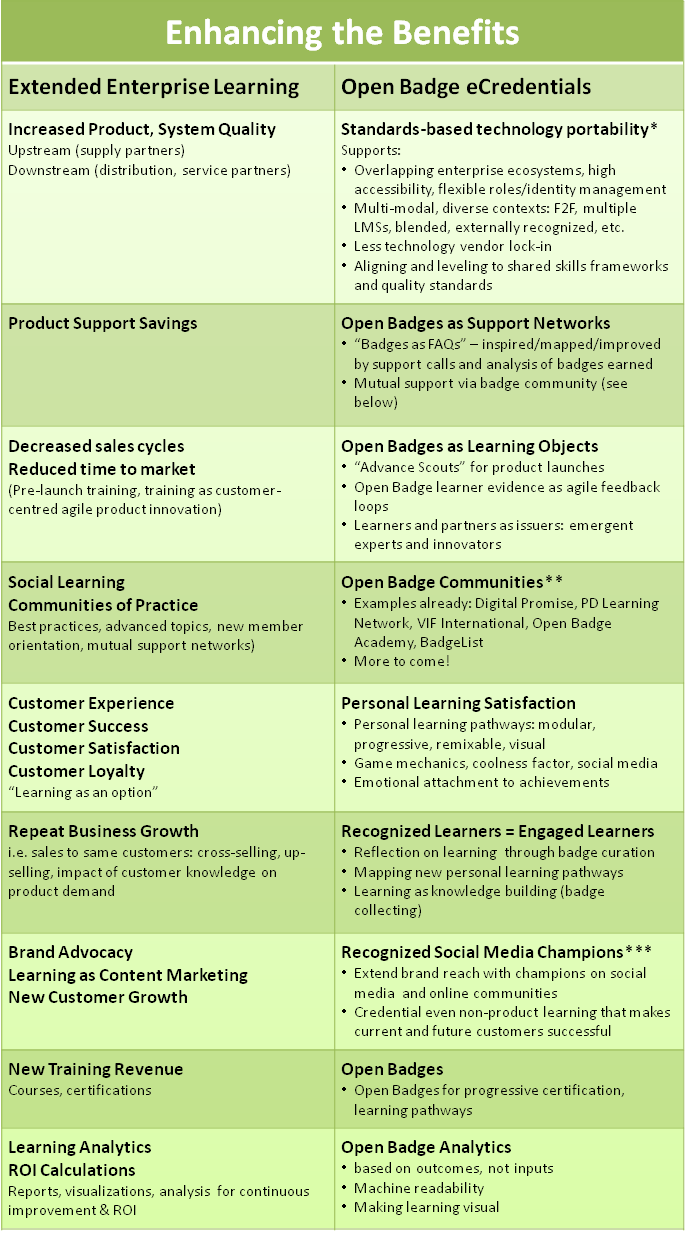
Notes about the Chart
Standards-based technology portability*
Jeff Walter in Training Magazine: Employee Training vs. Extended Enterprise Training:
In extended enterprise training, the student isn’t necessary known or identified.
NB: Open Badges are the perfect solution for this situation, since they don’t require that you register in a learning management system in order to learn and be recognized for it.
Open Badge Communities*
John Leh, Talented Learning: The Business Case for Customer Learning:
You can create communities of interest and encourage participants to develop skills, share their success stories and help answer others’ questions. You can wrap contests and awards around your learning programs to engage and motivate participants. The possibilities are endless. Ideally, you can build a growing global community of customers who are committed to your brand and help others learn about it too.
Recognized Social Media Champions**
Skilljar: How to Measure the ROI of Customer Training
Innovative marketers are experimenting with the next evolution of content marketing – offering on-demand training. This strategy provides your prospects with demonstrated value from the time they spend with your company, even prior to entering a buying cycle. Increase your brand awareness by offering industry thought leadership content that is scalable, convenient, and interactive. You can even offer certifications and accredited professional development hours.
NB: eCredentialing is great, but too many of the solutions offered rely on LMS silos, offering only the ability to post your credential on LinkedIn. There’s more to social media and learning ecosystems than the ability to post your LMS credential on LinkedIn. LMS siloes are all about the vendor and vendor lock-in. Open Badges can be elements of a standards-based, loosely coupled ecosystem where learning and recognition can travel easily across LMSs and other technology systems.
Early traction: Open Badges in Extended Enterprise Learning
I’ve quoted IBM’s David Leaser before. A slide from his February 2016 presentation does a great job of reviewing my points and adding a few more:
Early results for IBM’s initiative are very promising:
- 129% increase in enrolments for badged courses
- 226% increase in course completions
- 694% increase in successful end-of-course assessments
Other private sector ICT sector companies who have jumped on the Open Badges bandwagon include Adobe, Oracle, Autodesk, Microsoft, Citrix, Linux Professional Institute (LPI), Juniper Networks, Cisco, Red Hat Linux, Hortonworks and Lenovo.
Moving Beyond ICT
It’s only natural that ICT be a key early adopter with its focus on technology, but technology has had an transformative impact on the entire World of Work and Open Badges can be a great fit for other sectors too.
This graph from the Elearning! article cited above could provide a useful roadmap for Open Badges over the next year or two:
It’s interesting to see that Education is listed as the most active EET. I’m trying to wrap my head around that. If it’s product learning, what’s the product: the learning or the credential? How is the use of that product being supported by external learning? Who’s the customer? Who’s the upstream supplier? Downstream distributor? I can see some room for discussion of Professional and Continuing Education, adjunct faculty, online consortia, government and private sector relationships, but still… I see Education as more of a supplier to other EETs. On the other hand, Education is the most actively engaged with Open Badges, so that’s a strategy for them to better engage EETs with modular education and training supported by recognition pathways.
Let’s take a quick look at some of the others in declining order:
- Non-profit organizations
Current examples: Scottish Social Services Council, DisasterReady.Org, and hopefully MSF, as I advocated last year at ePIC 2015…more on this in future posts:
- Manufacturing
Current example: the Manufacturing Institute has Project Lead the Way for youth talent pipelines and its M-List, a Skills Certification System which brokers college training aligned to industry quality standards, but I don’t know of any product training programs that are credentialed with Open badges. Watch this space. I’ll continue to dig. - Healthcare/pharmaceutical
Not much yet; regulatory issues could be a barrier, but there is a lot of potential here. Another space to watch. - Software/web/development/services
The bulk of the early action, as described above - Financial/banking/insurance/real estate/legal
Some glimmers – not much. This would makes sense for distributed financial products such as mutual funds that require a diverse multi-channel salesforce. - Government
There is the so-called Belgian Backpack, but not much else that I know of, other than some interesting early experimentation in Ottawa related to a government-wide change initiative called Blueprint 2020. This is an area of potential significant growth. What if GovLoop understood the power of Open Badges to recognize learning across sectors and jurisdictions? - Associations
Lots of potential here and some early action. I’ll be looking at this sector in more depth in a future post.
It’ll be interesting to see how all this plays out over the next 12-24 months.
Coda
Although I never met him, I miss Jay Cross, who died last November:
In a 2012 post on the Internet Time Alliance blog, titled Customer Learning, a largely unexploited marketing strategy, Jay quoted retailer Sy Syms:
The best customer is an educated customer.
To this I would add “and the best partner is an educated partner”, whether that be a supplier, distributor or another stakeholder whose success is linked to yours.
I’ve focused on private sector extended enterprises in this post but as mentioned above, I’ll be looking the concept more closely in the public and not-for-profit sectors in the future.

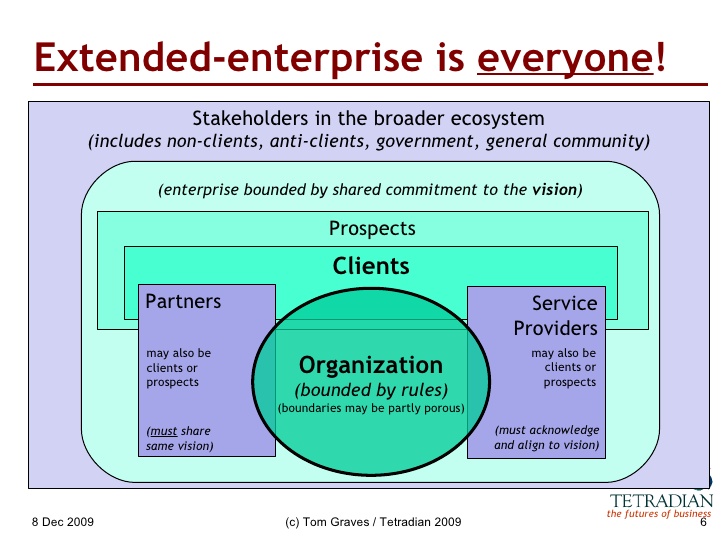
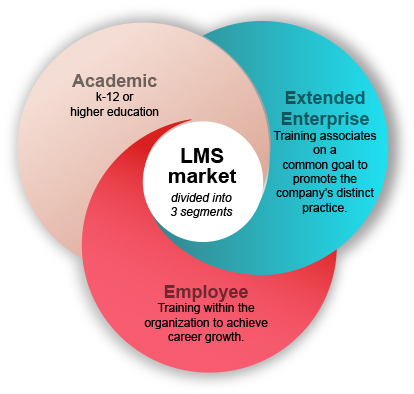
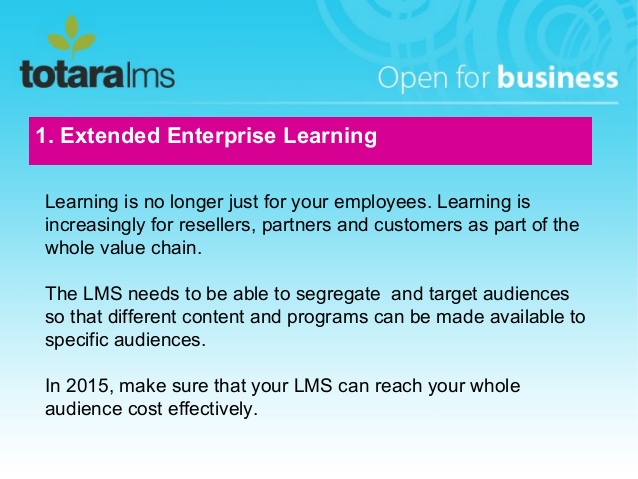
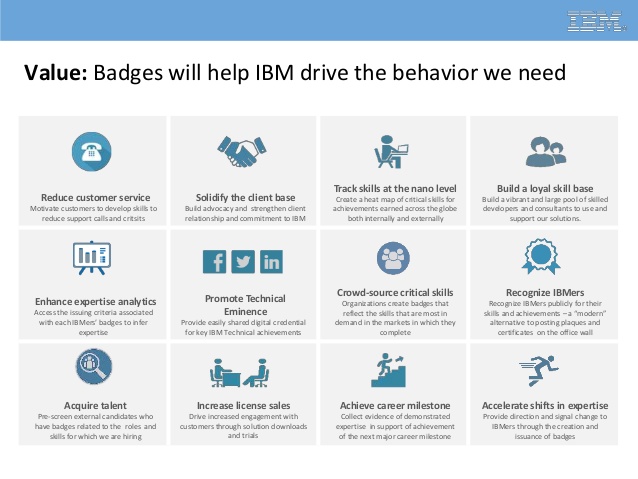
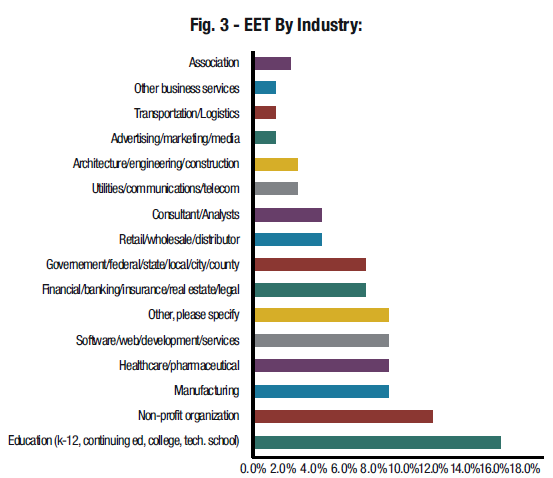
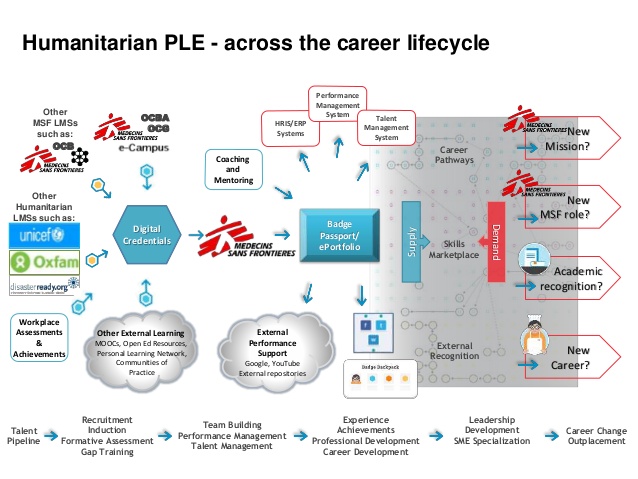

Great idea, Don, to use open badges in extended enterprise learning. If the latter is designed to attract and retain customers, and badging is (at least partly) designed to motivate them, then it makes sense to integrate them into the same education strategy.
Thanks Ryan, I agree. Plus, as Open Badges become more and more machine readable and reportable, it’s a form of learning analytics that can feed into sales strategies. “How many customers are up to speed on the new Mark IV?”
The augmented reality customer training from Hyundai that you just showed us in your own blog is a great example of how the training itself can be clear, engaging and cutting edge:
https://ryan2point0.wordpress.com/2016/04/19/educate-everyone/
Pingback: Mindful “Extended Enterprise” Learning at Academic Institutions | Littoraly